

In spring of 1968, the Whitney Museum of American Art hosted a major exhibition of works by Donald Judd, the first in a series of exhibitions devoted to younger artists. Don Judd was curated by William C. Agee and was on view from February 27 to March 24, 1968.
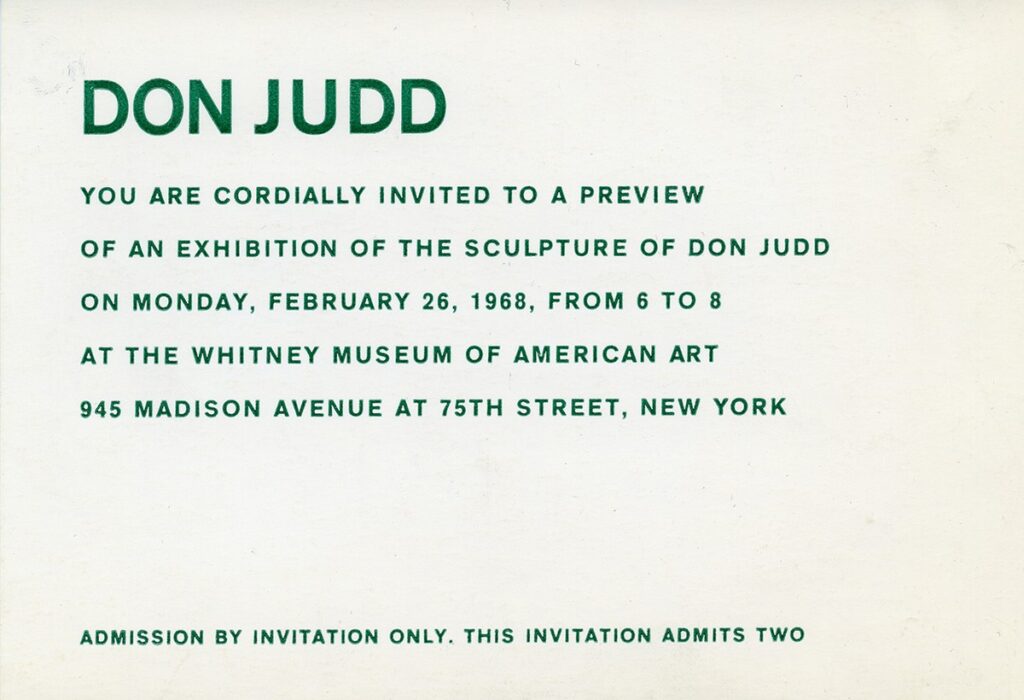
Invitation to the preview of Don Judd at the Whitney Museum of American Art, February 26, 1968.
In his opening catalog remarks Agee contended that, “This exhibition of some thirty works brings together for the first time the full range of one of the most original and stunning accomplishments of the 1960s.” Often discussed as Judd’s first retrospective, this exhibition contained over 30 works from 1963 to 1968, including many new works. As Elizabeth Baker noted in her April 1968 review for ARTnews, “The fact that he [Judd] previously had had only two one-man shows in New York galleries does not indicate how influential he has been for the past five years.”
The exhibition, which included a quarter of the works in three-dimensions that Judd produced between 1963 and 1968, reflected the diversity of materials and forms that he was working with at this period.
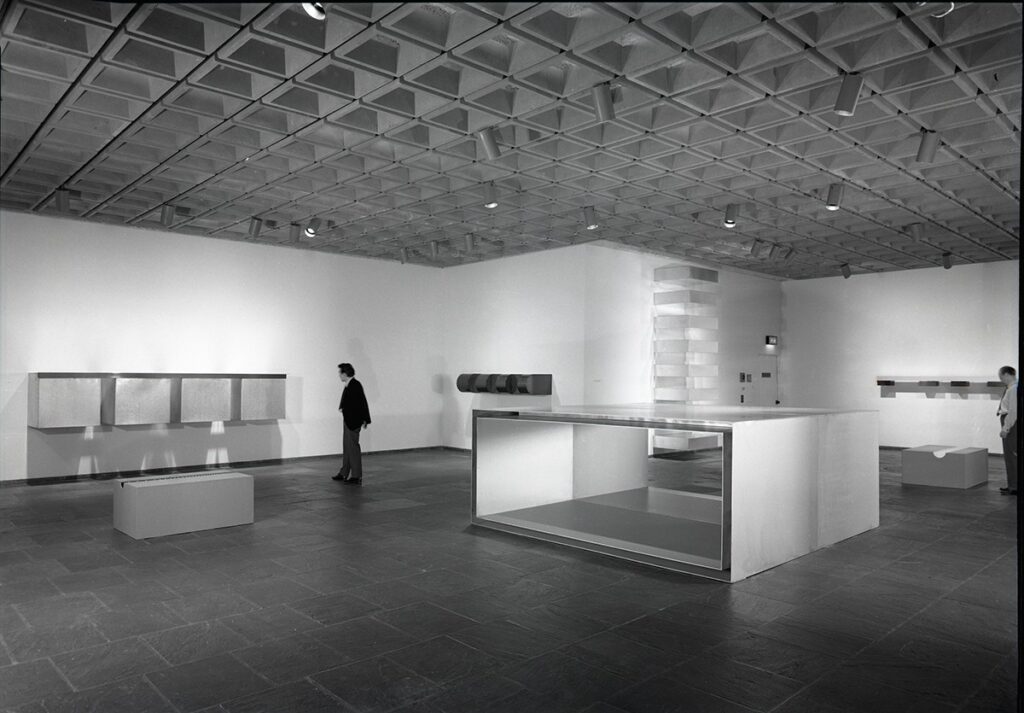
Installation view of Don Judd at the Whitney Museum of American Art, February 27-March 24, 1968.
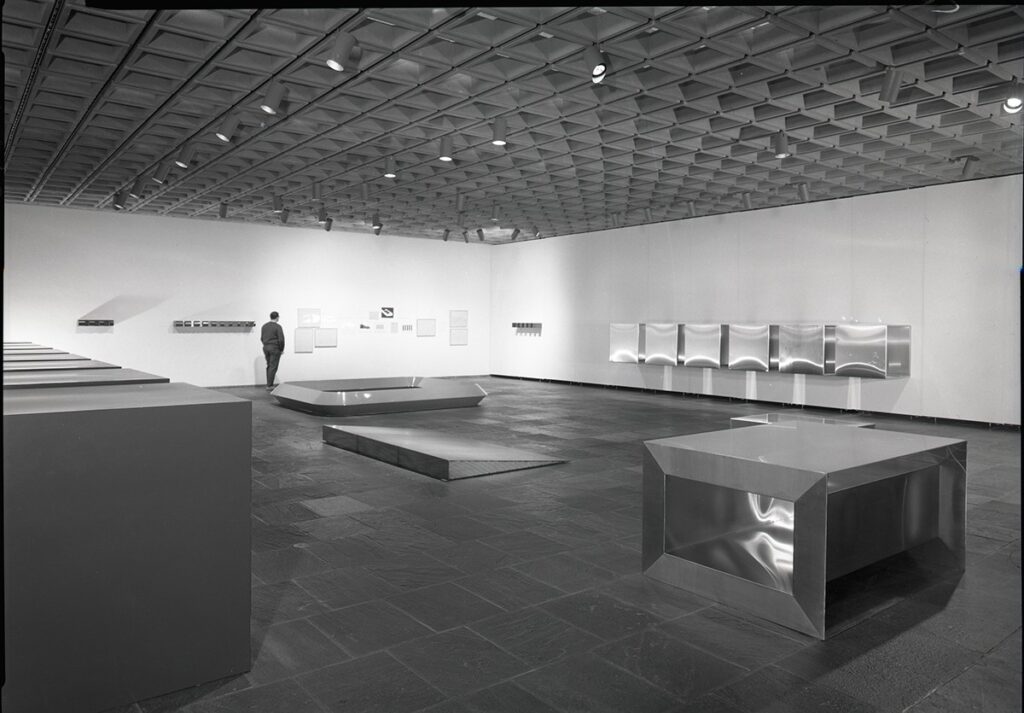
Installation view of Don Judd at the Whitney Museum of American Art, February 27-March 24, 1968.
Also included in the exhibition were twelve drawings, many of which corresponded to works in the show.
Installed with forms that Judd would become known for, such as stacks and progressions, were earlier pieces in wood that Judd made with the help of his father in 1963.
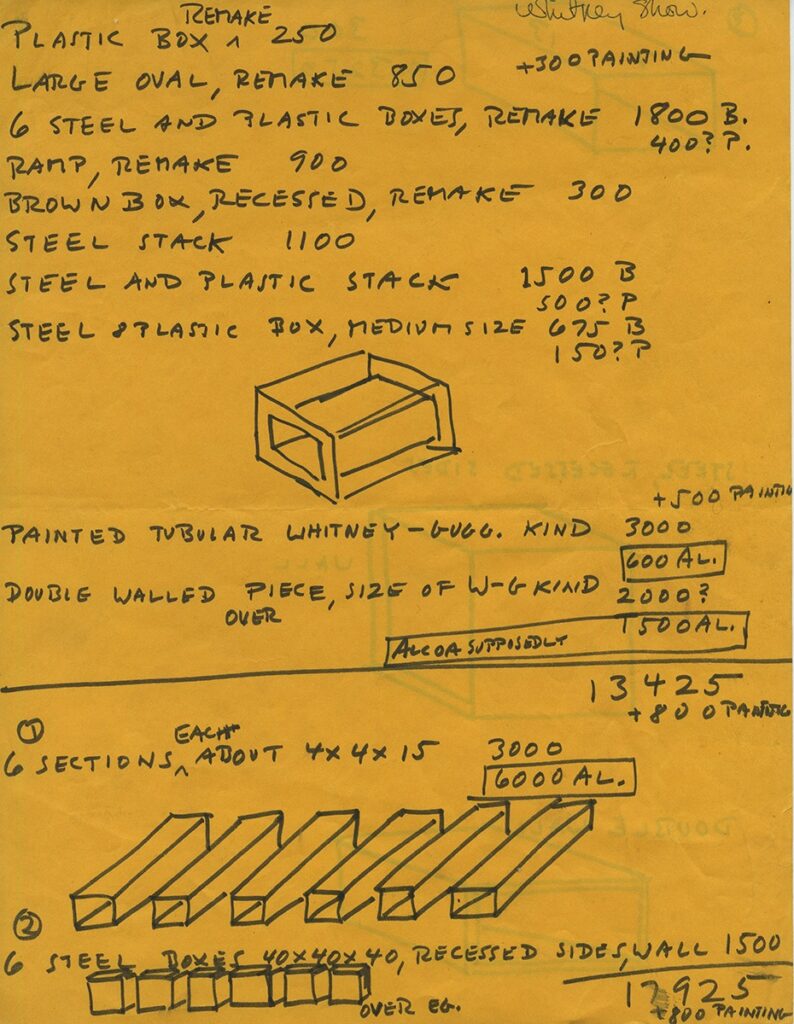
Notes by Donald Judd for Don Judd at the Whitney Museum of American Art, February 27-March 24, 1968.
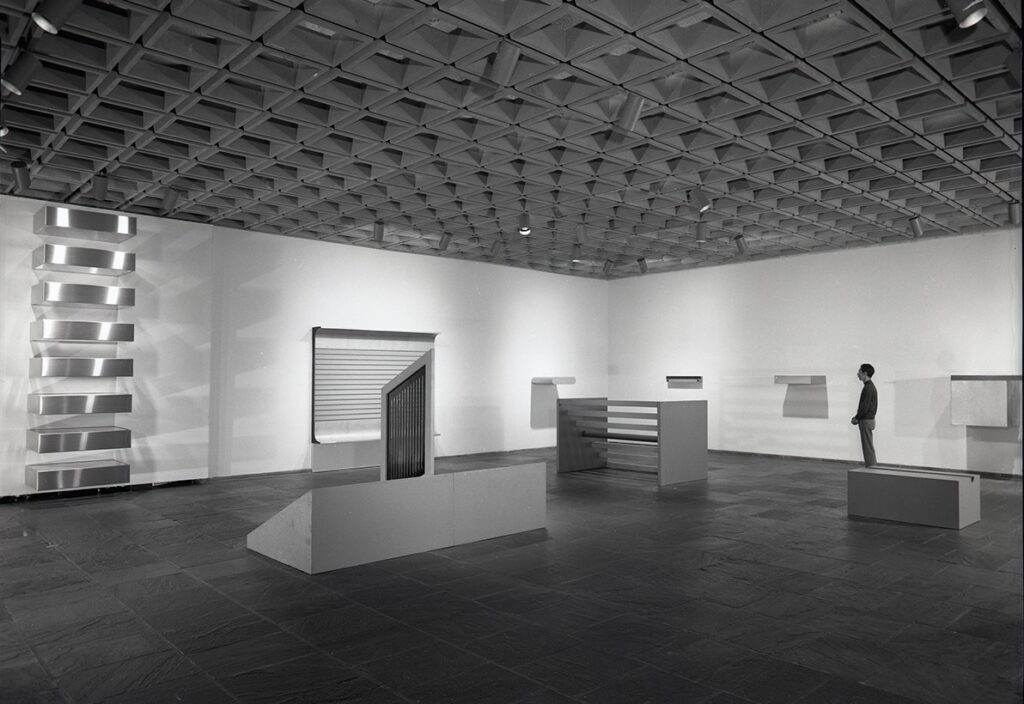
Installation view of Don Judd at the Whitney Museum of American Art, February 27-March 24, 1968.
The Whitney show included five works from 1963 that Judd made either by himself or with the help of his father Roy C. Judd. These works pre-date the expansion of his practice to include industrial fabrication in 1964. In a review of the show for the Baltimore Sun, Judd described how he worked directly with fabricators: “I have to talk to my sheet-metal man, give him the dimensions, discuss the exact kind of notch, talk of different ways things can be done. He [the fabricator] generally has a better idea of how to make things practically than I do. In one case I wanted a seam that was extremely impractical to make. There are so many limitations—keeping the metal clean, free of seams and welds, etc. All that takes a lot of talk.”
In the exhibition catalogue were “Several Quotations for Donald Judd…” which included statements by the artists Juan Gris and Dan Flavin, among others. Also included were a selection of short writings by Judd both from his reviews written for Arts magazine and later, longer essays, including, “Black, White, and Gray”, published in Arts in March 1964, in which Judd wrote: “Things that exist, exist, and everything is on their side…Everything is equal, just existing, and the values and interests they have are only adventitious.”
Closing out his catalogue statement, Agee reflected on the scope of Judd’s work to date, arguing that, “The breadth of Judd’s accomplishment lies, finally, not as the center of a movement, nor as part of an ideological position, but as a series of unique works of high and individual quality.”